You know what’s funny? I’ve been fascinated by haircut stories ever since I chopped off my waist-length hair at sixteen. One day I had this long, safe hairstyle my mom loved, and the next day I walked out of a salon looking like a completely different person. That single decision didn’t just change how I looked – it changed how I felt about myself. And apparently, I’m not alone in this obsession.
According to Hair Story Network, the most popular categories of haircutting stories include consensual transformations, forced changes, punishment scenarios, and time-for-a-change narratives. These stories tap into something deep – our need for control, our search for identity, and those moments when we’re ready to become someone new.
Here’s what I’ve learned after reading way too many of these stories: they’re never really just about hair. Whether you’re a writer looking for inspiration, someone who devours transformation stories, or you’re just curious about why haircuts feel so loaded with meaning, these 25 stories offer something for everyone. Each type reveals different parts of the human experience – from workplace pressures to family drama, personal healing to figuring out who you really are.
For writers exploring transformation narratives, studying powerful story themes can help you understand what makes these stories resonate across different genres.
Table of Contents
- What Makes These Stories Actually Good
- Growing Up, One Snip at a Time (Stories 1-5)
- When Your Job Controls Your Hair (And It Sucks) (Stories 6-9)
- When Hair Becomes Part of Healing (Stories 10-13)
- Finding Yourself in the Mirror (Stories 14-17)
- Family Hair Drama (The Good Kind) (Stories 18-21)
- Plot Twists and Hair Clips (Stories 22-25)
- What Makes These Stories Stick With You
- How AI Can Help Your Writing (Without Taking Over)
- Final Thoughts
TL;DR
- The best haircut stories dig deep into emotions and character change – the hair is just the vehicle
- These 25 stories cover six main types: growing up, work pressure, healing, identity discovery, family stuff, and surprise encounters
- Universal themes like rebellion, fresh starts, and finding yourself make these stories work for everyone
- Cultural context and sensory details turn simple haircuts into meaningful storytelling
- Stories with clear beginning-middle-end structure (decision, cut, aftermath) feel most satisfying
- Great haircut stories connect what happens on the outside to what’s changing on the inside
What Makes These Stories Actually Good
Look, not every dramatic haircut makes for a compelling story. I’ve read plenty of “and then she cut her hair and felt better” narratives that fall flat. So what separates the memorable ones from the forgettable?
It’s About Feelings, Not Follicles
The most powerful haircut stories dig way beneath the surface. They’re about what’s happening inside someone’s head and heart, not just what’s happening to their head. Hair carries serious emotional weight – it’s tied up with identity, control, and how we want the world to see us in ways that few other physical things can match.
When you’re reading or writing these stories, focus on the emotional journey. What internal shift is the haircut representing? How does the person feel before they sit in that chair, while the scissors are doing their work, and when they see themselves in the mirror afterward? That’s where the real story lives.
Understanding character development helps create compelling narratives, and checking out excellent short story examples can give you ideas for crafting memorable transformations.
| Story Element | Weak Version | Strong Version |
|---|---|---|
| Emotional Depth | “She cut her hair short” | “With each snip, Sarah felt the weight of her failed marriage falling away” |
| Character Motivation | “He wanted a new look” | “The military buzz cut would erase the last traces of his rebellious youth” |
| Sensory Details | “The salon was busy” | “The rhythmic snip of scissors mixed with whispered confessions and nervous laughter” |
| Cultural Context | “Her family disapproved” | “Three generations of women had never cut their hair – until today” |
| Transformation Impact | “She looked different” | “In the mirror, she saw her mother’s strength reflected in her own determined eyes” |
Characters Who Actually Change
Good haircut stories feature people whose transformation reveals something deeper about who they are or who they’re becoming. The haircut becomes the catalyst for character growth, not just a plot device to move things along.
Ask yourself: does this transformation challenge what the character believes about themselves? How do other people react, and what does that tell us about relationships and social dynamics? The answers to these questions separate the good stories from the great ones.

Cultural Context That Actually Matters
The best stories acknowledge that hair means different things to different communities. They tackle beauty standards, workplace expectations, religious practices, and generational differences with respect and authenticity.
This cultural awareness keeps stories from feeling generic. When writers actually do their homework on cultural stuff, you can tell. The story feels real instead of like someone just googled “hair traditions” five minutes ago.
Stories That Flow Right
Well-crafted haircut stories follow a natural progression: the decision to cut (setup), the cutting process and immediate aftermath (the main event), and the long-term impact (resolution). This structure lets tension build and gives readers a satisfying payoff.
Timing is everything in these stories. Rush through the transformation, and you lose the emotional weight. Drag out the decision-making too long, and readers get bored. The sweet spot keeps people engaged from first thought to final look in the mirror.
Growing Up, One Snip at a Time
These five stories capture those pivotal moments when young people use hair transformation to mark their leap into adulthood. Each one explores themes of independence, self-discovery, and breaking free from childhood expectations. Sometimes the most profound changes start with something as simple as walking into a salon and saying, “I want something completely different.”
“The Summer Before College” Story Structure:
- Setup (25%): Maya stares at her reflection, running fingers through the same braids her mother has styled since kindergarten. College acceptance letter sits on her dresser.
- The Big Moment (50%): Late-night research of hair salons, mother’s shocked reaction, the walk to the salon, meeting the stylist who gets her need for change.
- Aftermath (25%): The transformation reveal, family’s gradual acceptance, Maya’s confidence as she packs for college, final scene of her helping a younger cousin think about their own hair journey.
1. The Pre-College Chop
Maya has worn her hair in the same long braids her mother styled since childhood. The night before leaving for college, she cuts it into a modern bob, each snip representing her growing independence and readiness to define herself on her own terms.
This story works because it captures that universal moment when young adults claim their autonomy. The haircut becomes a physical way of saying “I’m ready to make my own decisions now.” We’ve all had some version of this moment, even if it wasn’t about hair.
2. First Salon Experience
A sheltered teenager’s first professional haircut becomes a rite of passage into adulthood and independence. The salon environment, the stylist’s expertise, and the transformation process all contribute to a coming-of-age experience that goes way beyond hair.
The power here is in the contrast between childhood (home haircuts, parents deciding everything) and emerging adulthood (professional services, personal choices). It’s about claiming control over your own appearance and, by extension, your own life.
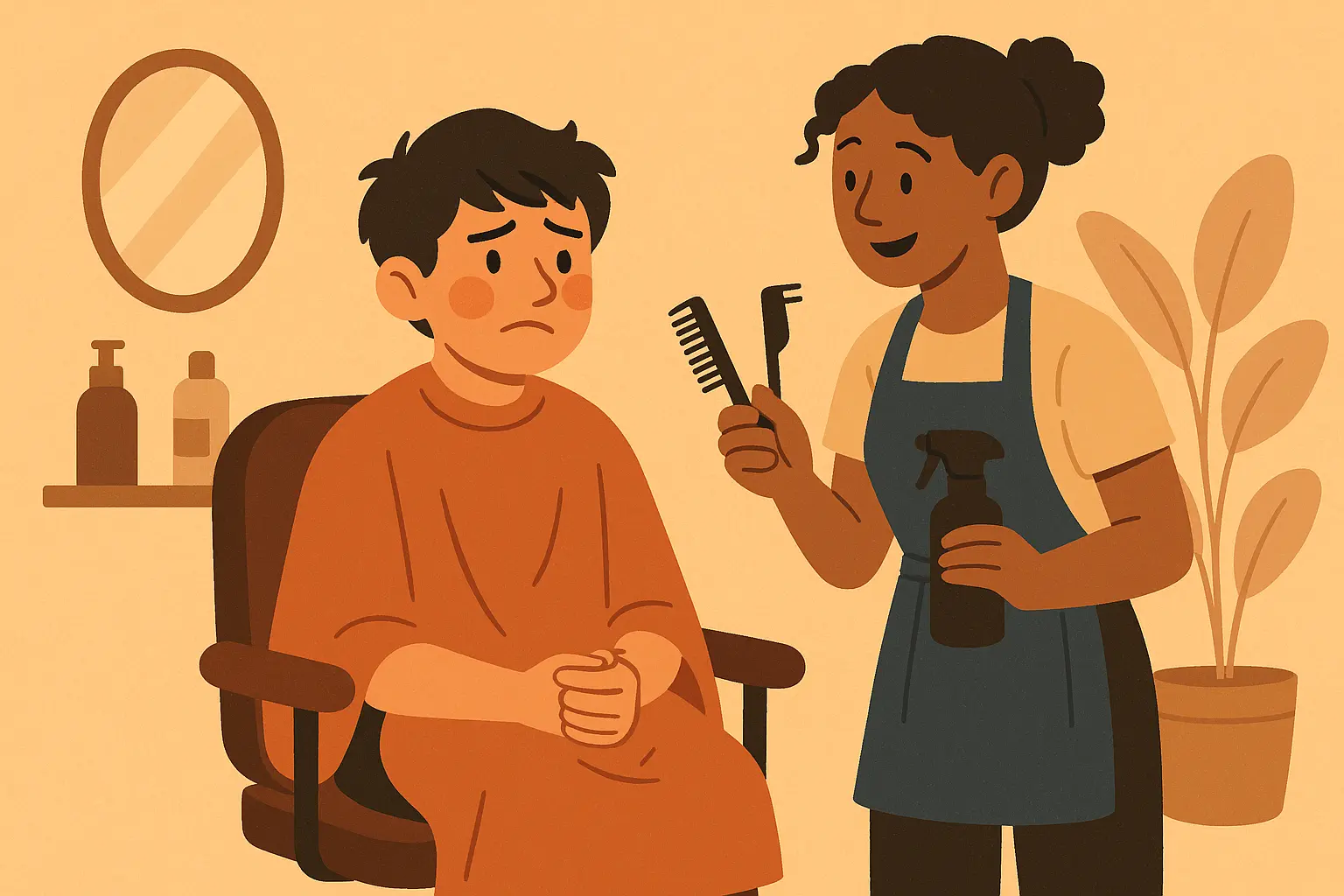
3. The Rebellion Cut
A straight-A student shocks everyone by getting an edgy pixie cut, discovering their authentic self in the process. This transformation challenges everyone’s assumptions about who they are and what they’re capable of becoming.
Rebellion stories work because they tap into that universal desire to break free from other people’s expectations. The dramatic haircut becomes a visible declaration: “You don’t know me as well as you think you do.”
4. Sweet Sixteen Makeover
A shy girl transforms her appearance for her sixteenth birthday, gaining confidence and changing her social dynamics. The haircut marks not just a birthday but a psychological shift from childhood insecurity to teenage self-assurance.
Look, we all know getting a haircut doesn’t fix your life overnight. But the good stories? They show how sometimes changing how you look on the outside gives you the push you need to change how you feel on the inside.
5. The Graduation Transformation
A student marks their educational milestone with a dramatic hair change, preparing for their next life chapter. The timing connects the physical transformation with a significant life transition, amplifying the symbolic impact.
Graduation stories work because they capture that in-between space – you’re not who you were as a student anymore, but you’re not quite who you’re becoming as an adult either. The haircut becomes a bridge between those two identities.
When Your Job Controls Your Hair (And It Sucks)
These four stories examine how workplace expectations and social pressures influence hair choices, often forcing people to choose between being authentic and fitting in. They explore themes of systemic bias, professional discrimination, and the personal cost of adapting to society’s narrow beauty standards.
6. The Corporate Compromise
A creative professional reluctantly cuts their artistic hairstyle to fit corporate expectations, exploring themes of authenticity versus conformity. The story examines what we sacrifice for professional advancement and whether those trade-offs are actually worth it.
This hits home because so many of us face similar choices in our careers. The haircut represents bigger questions about maintaining your personal identity within systems that want everyone to look the same.
7. The Interview Cut
Someone changes their natural hair texture or style for a job interview, examining societal beauty standards and professional bias. This story can explore racial discrimination, cultural expectations, and the unfair burden placed on people to conform to narrow beauty ideals.
I have a Black friend who straightened her natural curls for every job interview for years. She finally said “screw it” and showed up to her dream job interview with her hair in its natural state. Guess what? She got the job. But man, the anxiety she went through making that choice – that’s a story right there.

8. Military Induction
A recruit’s first military haircut represents their transition from civilian to service member, exploring themes of sacrifice and belonging. The uniform appearance requirements symbolize giving up individual identity for a collective purpose.
Military haircuts are intense because there’s no going back. You’re literally cutting away your civilian identity. Some people love that clean slate feeling, others mourn what they’re losing. Both reactions are totally valid.
9. The Wedding Preparation
A bride-to-be struggles with family pressure to have “appropriate” hair for their wedding day, balancing tradition with personal preference. This story explores generational differences, cultural expectations, and the challenge of honoring family while staying true to yourself.
Wedding stories work when they highlight the tension between what you want and what your family expects. The haircut decision becomes a microcosm of larger relationship dynamics and cultural negotiations.
When Hair Becomes Part of Healing
These four stories explore how hair transformation can be part of the healing process during life’s toughest moments. From medical challenges to personal loss, these narratives show how taking control of your appearance can provide emotional strength, create meaningful rituals, and help process grief in tangible ways.
10. Chemotherapy Courage
A cancer patient proactively cuts their hair before treatment begins, taking control of their narrative and finding strength in vulnerability. This story explores medical challenges, personal agency, and the courage required to face life-threatening illness.
Dr. Patricia Williams, an oncologist, receives her own cancer diagnosis at age 52. Having counseled countless patients through hair loss, she understands the psychological impact intimately. She schedules an appointment with her longtime stylist, Maria, choosing to cut her salt-and-pepper hair into a stylish pixie before chemo begins.
Dr. Patricia’s Transformation Scene:
Patricia sits in Maria’s chair, watching her reflection as twenty years of styling history gets swept away. “I’ve told so many patients that hair grows back,” she says, her voice steady despite trembling hands. “Now I understand it’s about who you become while you’re waiting.” Maria’s scissors pause. “And who are you becoming, Dr. Patricia?” Patricia meets her own eyes in the mirror. “Someone who fights on her own terms.”
The Dr. Patricia story gets me every time because here’s someone who’s helped other people through this, and now she’s living it herself. That line about becoming “someone who fights on her own terms”? Chef’s kiss. That’s what good writing looks like.
11. The Mourning Cut
Someone cuts their hair as a ritual of grief after losing a loved one, exploring cultural traditions and personal healing. Different cultures have various hair-cutting traditions associated with mourning, and this story can explore those practices while examining personal grief processes.
There’s something powerful about making a physical change when you’re processing emotional pain. It’s like you need the outside to match what’s happening on the inside.
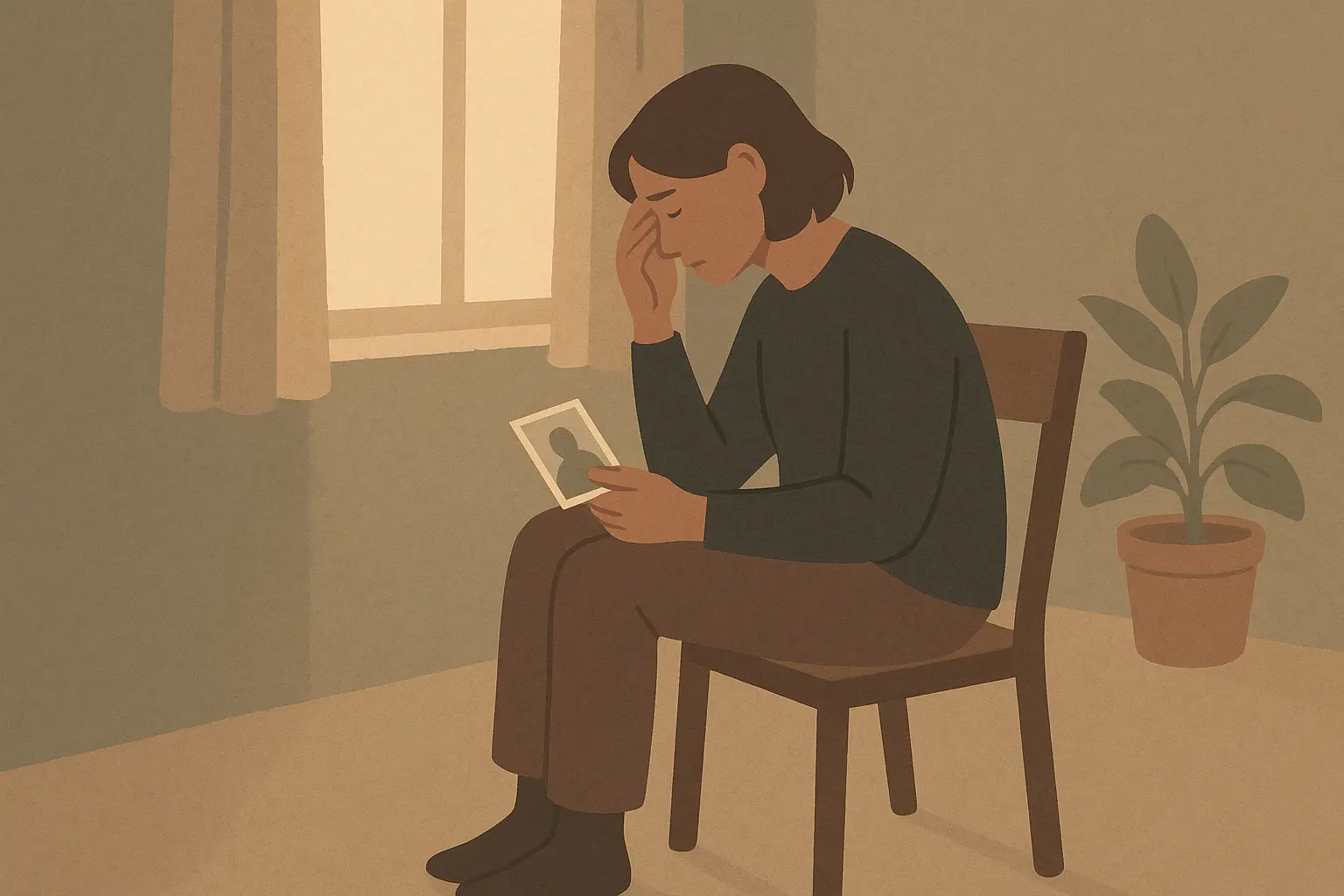
12. Post- Breakup Liberation
After a difficult relationship ends, someone cuts their hair to reclaim their identity and start fresh. Sarah discovers her partner’s infidelity and walks into a salon asking them to “cut it all off.” As her shoulder-length waves fall to the floor, she feels the weight of the relationship lifting.
We’ve all been there – wanting to do something dramatic after a relationship ends. Most of us just eat too much ice cream, but cutting off all your hair? That’s commitment to the fresh start.
13. The Charity Donation
A person donates their long hair to make wigs for cancer patients, finding purpose and connection through generosity. This story explores altruism, community support, and the meaningful ways we can help others through personal sacrifice.
These stories show how one person’s choice to help can ripple out and touch so many other lives. They transform personal loss (giving up long hair) into community gain (helping cancer patients feel beautiful).
Finding Yourself in the Mirror
These four stories focus on how hair transformation can be a powerful tool for exploring and expressing authentic identity. From gender expression to cultural reconnection, these narratives show how changing your hair can be part of a larger journey toward understanding and accepting who you truly are.
14. Gender Expression Journey
A person explores their gender identity through hair changes, finding courage to express their authentic self. Alex, assigned female at birth, has always felt uncomfortable with long hair but couldn’t articulate why until their twenties.
The story begins with Alex researching barbers online at 2 AM, finally ready to make the change they’ve been thinking about for years. They visit an LGBTQ+-friendly barbershop where they meet Jordan, a trans barber who immediately understands. As Jordan cuts Alex’s hair into a masculine style, they share stories about identity, family reactions, and self-acceptance.
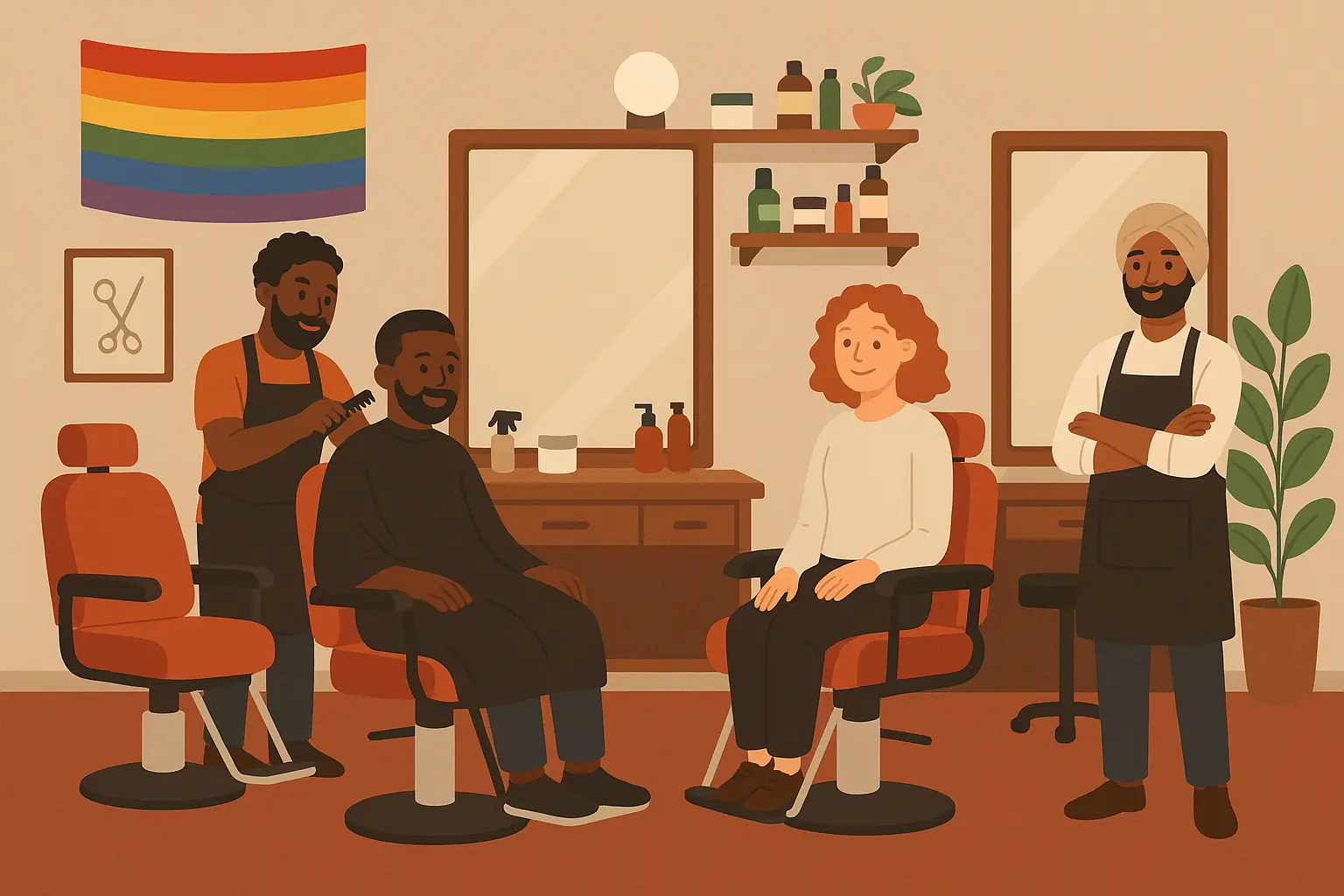
15. Cultural Reconnection
Someone embraces their heritage by adopting traditional hairstyles, reconnecting with their roots and family history. This story explores cultural identity, generational knowledge, and the ways appearance can connect us to our ancestry.
There’s something powerful about using your hair to connect with where you came from. It’s like wearing your heritage in a way everyone can see.
16. The Midlife Reinvention
A middle-aged person dramatically changes their hairstyle to mark a new phase of life and personal growth. This story challenges assumptions about who can make dramatic appearance changes and explores themes of continued growth and self-discovery throughout life.
Here’s what I love about midlife transformation stories: they reject the idea that personal reinvention is only for young people. Growth and change can happen at any age, and sometimes a dramatic haircut is exactly the push you need.
17. Recovery Milestone
Someone in recovery from addiction marks their sobriety anniversary with a symbolic haircut, representing renewal and commitment to change. The haircut becomes a visible reminder of personal progress and a celebration of overcoming challenges.
Recovery stories work because they show transformation as an ongoing process rather than a single event. The haircut marks progress while acknowledging the continuing journey ahead.
Family Hair Drama (The Good Kind)
These four stories explore how hair decisions affect family relationships and how shared hair experiences can strengthen bonds between family members. From mother-daughter salon visits to inherited family businesses, these narratives show how hair connects generations and creates meaningful family traditions.
Family-centered narratives often benefit from understanding how to create compelling first-person perspectives that capture intimate family moments and emotional connections.
| Family Role | Hair Relationship Dynamic | Story Potential |
|---|---|---|
| Mother-Daughter | Shared beauty rituals, generational differences, bonding through transformation | High – explores changing relationships, tradition vs. modernity |
| Siblings | Competition, solidarity, shared experiences | Medium – works best with crisis or major life events |
| Grandparent-Grandchild | Wisdom transfer, final moments, legacy | High – emotional depth, life cycle themes |
| Parent-Teen | Control vs. independence, identity formation | High – universal coming-of-age themes |
| Extended Family | Cultural traditions, family business, heritage | Medium – requires strong cultural context |
18. Mother-Daughter Bonding
A mother and daughter share a salon experience that bridges generational differences and strengthens their relationship. This story explores how shared experiences can heal family tensions and create new understanding between different generations.
The salon becomes neutral ground where both women can be vulnerable and connect over shared experiences of beauty, aging, and self-care. The haircuts become secondary to the relationship building that happens during the process.
19. The Inherited Salon
A young person takes over their family’s hair salon, learning about legacy, tradition, and finding their own path in the family business. This story explores generational expectations, business inheritance, and the challenge of honoring tradition while creating your own identity.
Family business stories capture the tension between honoring the past and creating the future. The salon becomes a symbol of family legacy and personal responsibility.
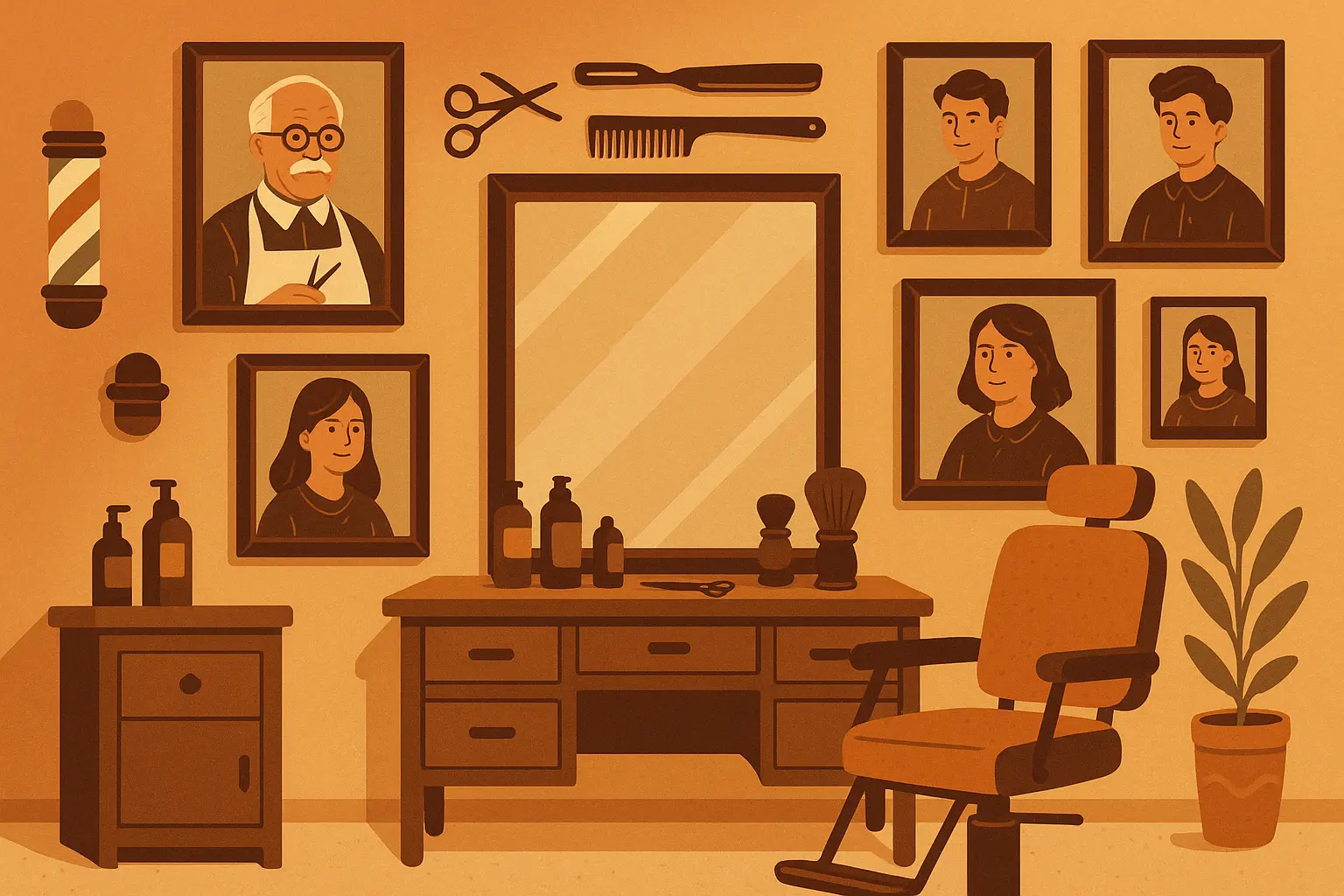
20. Grandmother’s Last Cut
A grandchild gives their elderly grandmother a final haircut, creating a tender moment of connection and saying goodbye. This story explores aging, family caregiving, and the intimate ways we show love for elderly relatives.
My grandmother used to do my hair every Sunday morning. It was our thing. When she got too shaky to braid anymore, I started doing hers instead. Those last few months, sitting behind her chair, gently brushing her thin hair – it was like our roles had flipped, you know?
21. Sibling Solidarity
Siblings cut their hair together in support of a family member facing illness, demonstrating love and unity. This story shows how families rally together during crises and how shared sacrifice can strengthen family bonds.
Solidarity stories work because they show family members putting aside their differences to support each other. The haircuts become visible symbols of family unity and mutual support.
Plot Twists and Hair Clips
These four stories feature surprising situations where hair cutting becomes the catalyst for unexpected personal growth, new relationships, or life-changing realizations. From emergency situations to chance encounters, these narratives show how unplanned moments can lead to profound transformations.
22. The Accidental Stylist
Someone without training must cut hair in an emergency situation, discovering hidden talents and gaining new perspective on life. This story explores how crisis situations can reveal unexpected capabilities and lead to new career paths or personal insights.
Emergency Haircut Scene:
When the power goes out during the storm, nurse Jamie finds herself in the hospital break room with a pair of surgical scissors, carefully cutting tangled hair away from a car accident victim’s head wound. “I’ve never done this before,” she admits to the patient, who’s conscious but shaken. “Neither have I,” the patient whispers back, and they both start laughing despite everything. Three months later, Jamie enrolls in cosmetology school, remembering how that moment of unexpected intimacy changed her perspective on healing and human connection.
Emergency stories work because they strip away normal social conventions and force characters to act on instinct. The haircut becomes a test of character and resourcefulness.
23. The Traveling Barber
A mobile hairstylist brings transformation to unexpected places, touching lives and building community connections. This story explores how personal services can create meaningful human connections and how beauty care can be a form of community service.
Traveling service stories work because they show how individual skills can have broader community impact. The barber becomes a connector, bringing people together through shared experiences.
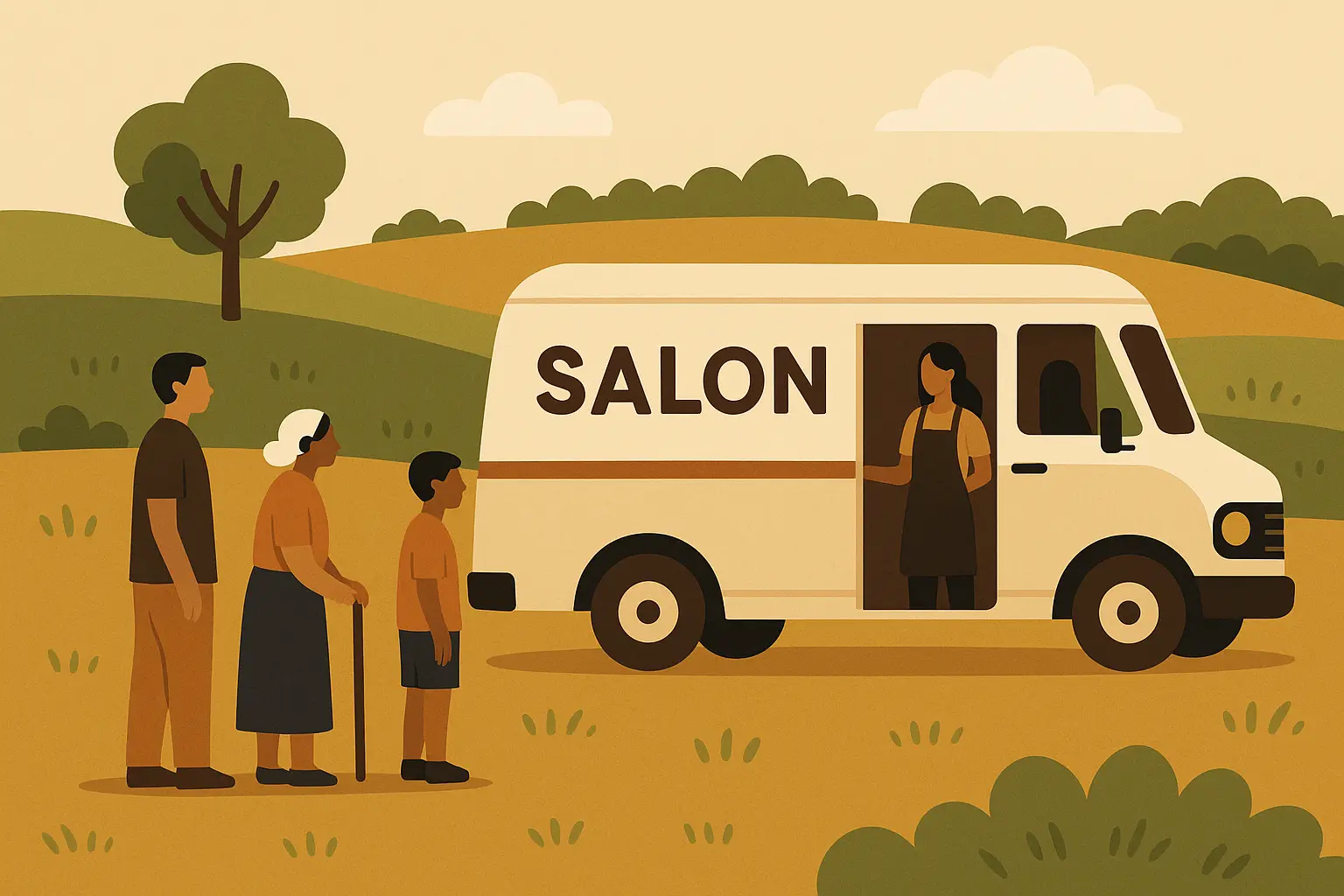
24. The Salon Confession
During a routine haircut, a client shares a life-changing secret with their stylist, leading to unexpected friendship and support. This story explores the intimate nature of personal care services and how vulnerability can create meaningful connections.
There’s something about the salon chair that makes people open up. Maybe it’s the physical closeness, maybe it’s the extended time together, but stylists hear everything. These confession stories capture that unique intimacy.
25. The Competition Cut
A hairstyling competition becomes the backdrop for personal rivalry, artistic growth, and unexpected romance. This story combines professional development with personal relationships, showing how competitive environments can foster both conflict and connection.
Competition stories work because they create natural dramatic tension while exploring themes of artistic expression, professional growth, and personal relationships under pressure.
What Makes These Stories Stick With You
Okay, I know rating stories with star systems seems a bit much, but hear me out. Some of these story ideas are just stronger than others. Here’s what I look for when I’m trying to figure out if a haircut story is actually good or just okay.
Emotional Impact That Actually Hits
High-impact stories like “Chemotherapy Courage” and “Gender Expression Journey” achieve serious emotional depth by combining personal vulnerability with experiences lots of people can relate to. They don’t just show physical transformation – they explore what that change means psychologically and socially.
When I’m evaluating emotional impact, I ask whether the story addresses fundamental human needs: identity, belonging, control, growth, or healing. Stories that connect hair transformation to these deeper needs tend to stick with readers long after they finish reading.
Stories with moderate emotional impact like “The Corporate Compromise” have solid foundations but might not have the universal appeal needed for broader audiences. They work well for specific groups but don’t necessarily transcend their particular circumstances.
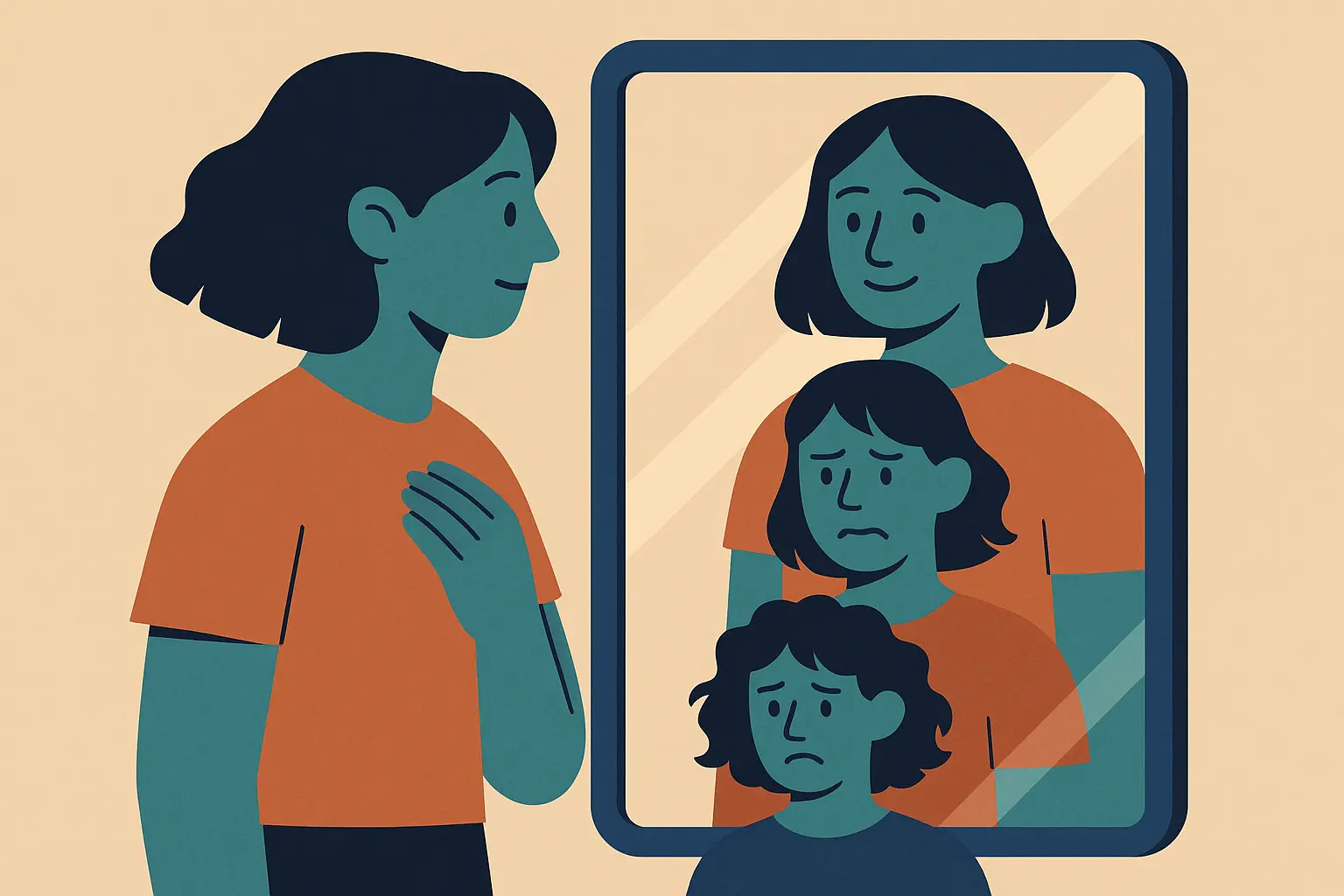
Character Development That Feels Real
Stories with excellent character development opportunities include “The Inherited Salon,” which offers multi-generational character exploration, and “The Accidental Stylist,” where unexpected circumstances reveal hidden character traits. These narratives provide clear character arcs from struggle to growth.
“Recovery Milestone” shows strong character development through its clear progression from addiction to sobriety, with the haircut serving as both symbol and catalyst for continued growth. The transformation feels earned rather than random.
Stories with good but limited character development, like “Military Induction,” offer strong individual transformation but might lack the scope for exploring multiple character dimensions or complex relationship dynamics.
Cultural Context That Actually Matters
Stories with strong cultural relevance address systemic issues and social dynamics that extend beyond individual experience. “The Interview Cut” tackles workplace discrimination and beauty bias, while “Cultural Reconnection” explores heritage and identity in meaningful ways.
“Mother-Daughter Bonding” examines generational differences and family dynamics, providing cultural context that many readers can relate to across different backgrounds and experiences.
Stories with moderate cultural relevance like “The Competition Cut” explore professional culture but might lack the broader social impact that makes stories truly memorable and shareable.
| Story Category | Emotional Impact | Character Development | Cultural Relevance | Universal Appeal | Overall Rating |
|---|---|---|---|---|---|
| Coming-of-Age | High | Excellent | High | Very High | ⭐⭐⭐⭐⭐ |
| Professional Pressure | Medium-High | Good | High | High | ⭐⭐⭐⭐ |
| Grief & Healing | Very High | Excellent | Medium-High | Very High | ⭐⭐⭐⭐⭐ |
| Identity Discovery | Very High | Excellent | High | High | ⭐⭐⭐⭐⭐ |
| Family Dynamics | High | Good-Excellent | High | Very High | ⭐⭐⭐⭐⭐ |
| Unexpected Encounters | Medium-High | Good | Medium | Medium-High | ⭐⭐⭐⭐ |
Story Structure That Flows
Well-structured narratives follow clear three-act progressions that feel natural and satisfying. “Post-Breakup Liberation” nails this with its decision-action-resolution structure, while “The Charity Donation” shows natural progression from personal choice to community impact.
“Sweet Sixteen Makeover” uses the coming-of-age structure effectively, with the haircut serving as the pivotal moment in a larger transformation story that feels complete and satisfying.
Stories with potentially challenging structures, like “The Salon Confession,” rely heavily on dialogue and timing. They can be powerful when done well but require careful pacing to keep readers engaged throughout the revelation process.
Universal Themes That Connect
Highly universal stories like “The Pre-College Chop” tap into experiences that transcend cultural and generational boundaries. Coming-of-age themes work across different societies and time periods, making these stories broadly appealing.
“Midlife Reinvention” addresses universal experiences of life transitions and continued growth, challenging assumptions about age and change that many readers can relate to personally or through family members.
Stories with moderate universal appeal like “Military Induction” explore specific cultural contexts (military service) while addressing broader themes of sacrifice and belonging that have wider appeal.
Sensory Details That Make It Real
Stories with rich sensory potential include “The Inherite d Salon,” which can draw on multiple generations of salon atmosphere, traditions, and sensory memories. “Chemotherapy Courage” offers contrast between medical and salon environments, creating opportunities for powerful sensory juxtaposition.
“The Competition Cut” provides high-energy competitive atmosphere with technical details about hairstyling techniques, tools, and the pressure of performance under scrutiny.
Standard sensory opportunities exist in stories like “First Salon Experience,” which offers classic salon atmosphere but might require more creativity to avoid clichéd descriptions of typical salon sounds, smells, and sights.
How AI Can Help Your Writing (Without Taking Over)
Look, I get it – nobody wants to feel like they’re being sold something. But if you’re actually trying to write these stories and you’re stuck staring at a blank page, having something that can throw you a decent opening line isn’t the worst thing in the world.
Nairrate’s AI-powered story generation tools can help writers overcome creative blocks, develop authentic characters, craft realistic dialogue, and explore multiple narrative perspectives when creating haircutting stories. The platform serves as a collaborative creative partner, providing fresh angles and creative starting points while preserving your unique voice and vision.
Writers struggling with story development can use Nairrate’s story starters generator to find compelling opening lines for their haircutting narratives.
Getting Unstuck When You’re Really Stuck
When you know you want to write about transformative haircuts but can’t find the right approach, Nairrate’s Story Starters Generator provides compelling opening lines that immediately establish tone and draw readers into your narrative. Instead of staring at a blank page wondering how to begin your salon scene, you’ll have multiple creative starting points to choose from.
The AI understands the emotional weight of hair transformation stories and can suggest unique angles you might not have considered. Whether you’re exploring the perspective of the stylist, the client, or even a family member observing the change, Nairrate helps you find the most compelling narrative approach.

Making Characters Feel Like Real People
Creating characters whose hair transformations feel meaningful requires depth and nuance that goes beyond surface-level description. Nairrate helps you develop characters with compelling backstories, realistic motivations, and authentic dialogue that brings your salon scenes to life.
The conversations between stylists and clients, family members discussing hair changes, or internal monologues during transformations need to feel genuine. Nairrate’s AI understands conversational patterns and can help you create dialogue that reveals character while advancing your plot naturally.
For additional inspiration on character development, explore powerful story examples that demonstrate effective character growth through transformation.
Exploring Different Angles and Genres
Whether your haircutting story fits into coming-of-age, literary fiction, romance, or even thriller genres, Nairrate understands genre conventions and can help you craft narratives that meet reader expectations while offering fresh perspectives.
The platform can help you explore different viewpoints within the same story concept – perhaps showing how a dramatic haircut affects the person getting it, their family members, friends, or romantic partners. This multi-perspective approach can add depth and complexity to your narratives.
Practical Help When You Need It
Use Nairrate when you need fresh perspectives on specific story elements. Maybe you’re struggling with how to show rather than tell the emotional impact of a dramatic hair change, or you need alternative ways to describe the physical transformation without being repetitive.
The AI provides options that expand your creative possibilities without replacing your unique voice and vision. It’s particularly helpful for generating sensory details, emotional responses, and realistic dialogue that makes your haircutting scenes feel authentic and engaging.
Ready to transform your haircutting story ideas into compelling narratives? Try Nairrate today and discover how our AI-powered tools can help you craft powerful stories that capture the emotional significance of hair transformations, creating narratives that resonate with readers long after the final word.
Final Thoughts
Here’s what I really think: hair stories work because they’re never actually about the hair. They’re about courage, identity, family, loss, hope – all the big stuff that makes us human. The haircut is just the thing that makes it all visible. And honestly? Sometimes that’s exactly what we need – a way to show the world (and ourselves) that we’re ready for whatever comes next.
These 25 story concepts span the full spectrum of human experience – from the excitement of coming-of-age independence to the courage required during medical challenges, from professional pressures to family bonding moments. The most compelling narratives in this collection share common elements: they treat the haircut as a catalyst rather than an event, they explore the emotional and psychological implications of change, and they connect individual transformation to broader human experiences that readers can relate to regardless of their own hair journey.
Whether you’re drawn to the rebellious energy of “The Rebellion Cut,” the emotional depth of “Chemotherapy Courage,” or the family dynamics in “Grandmother’s Last Cut,” each story offers opportunities to explore what it means to change, grow, and discover who we really are. The scissors become tools of transformation that extend far beyond the physical, cutting away old identities to reveal new possibilities.
Some of these might sound cheesy, but trust me, when it’s your hair hitting the floor, it feels pretty profound. These stories remind us that sometimes the most significant changes begin with the simplest decisions – walking into a salon and asking for something completely different. In that moment of vulnerability and possibility, we find the courage to become who we’re meant to be.
I’ve read way too many of these stories, and the best ones always surprise you. They take what seems like a simple premise – someone gets a haircut – and turn it into something that stays with you long after you’ve finished reading. That’s the real magic of transformation stories: they show us that change is always possible, and sometimes it starts with something as simple as looking in the mirror and deciding you’re ready to be someone new.



Add comment